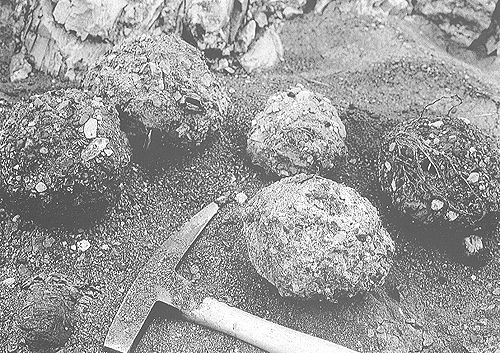
Indicators of intraformational erosion: armored mudstone clasts
Plate 80

Indicators of intraformational erosion: armored mudstone clasts
Plate 80
Mud clasts originally have angular, jagged outlines, and keep them if they are carried in suspension; rounding ensues from collisions, i.e., from solid friction between moving objects, when the clasts stay on the bottom and are hit by other particles or are entrained with the bed load. Rolling is the main moving mechanism of large clasts within the bed load. It implies a positive feedback: edges and corners of rolling particles are blunted, which increases "rollability."
If mud clasts reach a sand or gravel bed, sand grains and pebbles tend to stick to the plastic mud thus forming a protective armor. The natural tendency of bed load transport is, in fact, of disintegrating the mud clasts into smaller and smaller pieces (which are actually found in many sand beds) or into constituent silt and clay particles (which will be included in the sediment as matrix). In other terms, mud clasts tend to be destroyed and to disappear after some distance of travel.
The mud clasts shown in plate 80 were armored on the bed of a torrential stream of the Apennines.
| Photo: Insolera 1970. |